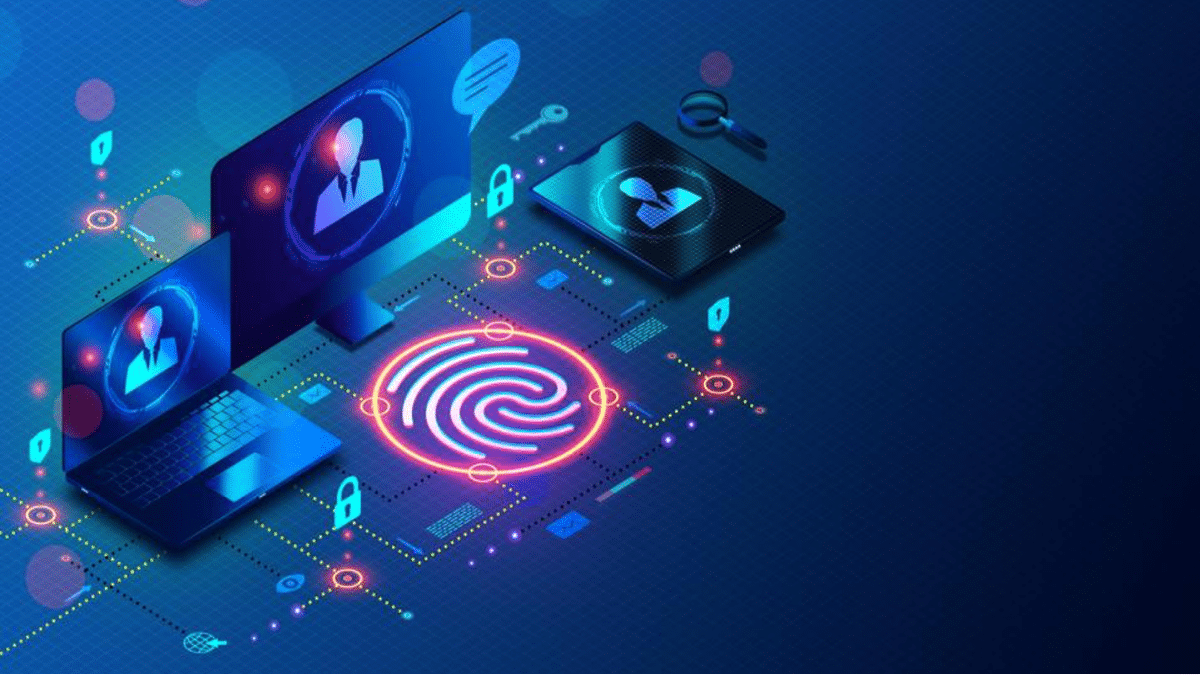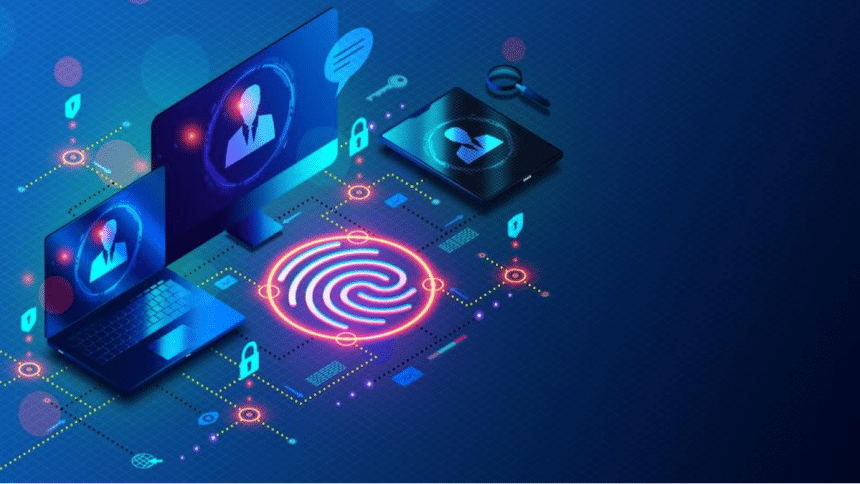Something shifted in 2023. After years of meaningless cookie banners and privacy policies nobody read, users started abandoning platforms with poor privacy practices. Privacy-focused browsers gained 40% more users. Encrypted messaging apps doubled their user base. Meanwhile, platforms treating user data carelessly watched engagement plummet.
With 4.9 billion internet users generating 2.5 quintillion bytes of data daily, the question changed from “How do we collect more data?” to “How do we prove we’re protecting what we have?” Recent surveys show 86% of consumers now consider data privacy a dealbreaker when choosing digital platforms.

Privacy and anonymity serve different but complementary purposes in web app privacy protection. Privacy keeps your data confidential and limits its use to intended purposes. Anonymity makes it impossible to connect your actions to your identity. The smartest platforms today layer both approaches, creating protection systems that work even when individual components fail.
Why Privacy Protection Became Non-Negotiable
Designing user-friendly interfaces without compromising privacy is one of the biggest challenges in modern web development. Users want speed, functionality, and anonymity — all at once.
That’s something experienced app development companies deeply understand and take into account when building modern platforms.
It’s not just about removing trackers — it’s about rethinking how applications are structured from the ground up.
When Privacy Failures Cost Everything
Data breaches deliver financial devastation extending far beyond immediate fixes. The average breach now costs $4.45 million globally, but indirect costs often prove more destructive.
Target’s 2013 breach affected 70 million customers and cost $292 million in direct expenses. The reputation damage lasted years. Equifax’s 2017 incident exposed 147 million records, ultimately costing over $1.4 billion. Both companies experienced user trust drops that persisted for multiple years.
Platform privacy measures implemented reactively cost 3-5 times more than proactive privacy architecture. Users abandon compromised platforms at 65% rates, with only 28% returning within twelve months. Modern privacy technology investments pay for themselves through user retention alone.
Privacy as Market Differentiation
Privacy-first platforms consistently outperform competitors across key metrics. Apple’s privacy-focused marketing contributed to 5.5% iOS market share growth between 2020-2023. Privacy-focused browsers like DuckDuckGo expanded from 100 million to over 1 billion daily searches during the same period.
Signal messaging users engage 40% more frequently than WhatsApp users, despite WhatsApp’s larger feature set. Brave browser users spend 35% more time browsing compared to Chrome users, indicating higher engagement when users feel secure.
B2B platforms emphasizing privacy protection acquire enterprise clients 28% faster and maintain contract renewal rates 15% higher than competitors using standard privacy approaches.
Technical Architecture That Actually Protects Users
Modern user data protection relies on multiple technical layers working together, not simple compliance checkboxes. Effective privacy architecture requires fundamental design decisions that prioritize user protection without compromising core functionality.
Successful implementations combine cryptographic protection, architectural privacy design, and operational security practices. These technical foundations must be established during initial development—retrofitting privacy protection typically costs 400% more and delivers inconsistent results.
End-to-End Encryption Beyond the Buzzwords
End-to-end encryption represents the gold standard for data protection, ensuring only intended recipients access to information. However, implementing E2EE in web applications requires careful balance between security and performance.
WhatsApp processes over 100 billion messages daily using the Signal Protocol for E2EE while maintaining message delivery speeds under 200 milliseconds. The technical achievement lies in sophisticated key management—each conversation uses unique encryption keys that neither WhatsApp nor Meta can access.
Client-Side Encryption: Data gets encrypted on user devices before transmission, ensuring servers never access plaintext information. ProtonMail encrypts emails using client-side JavaScript, protecting content even if their servers are compromised.
Zero-Access Architecture: Platforms design systems where administrative access cannot reveal user data. Bitwarden encrypts vault data with user-derived keys, making it technically impossible for the company to view stored passwords.
Perfect Forward Secrecy: Each session uses unique encryption keys that expire after use. Signal generates new encryption keys for every message, ensuring that even if current keys are compromised, historical communications remain protected.
Performance optimization becomes crucial. E2EE typically adds 15-30ms latency per request, but smart implementation reduces this impact. Cloudflare’s encrypted DNS processes over 1 trillion queries daily with less than 10ms additional latency.
Data Minimization That Works
Data minimization extends beyond collecting less information—it requires rethinking how platforms operate fundamentally. Leading platforms implement sophisticated minimization through several mechanisms:
Differential Privacy: Apple’s implementation adds mathematical noise to individual data points while maintaining statistical accuracy across large datasets. Their iOS telemetry protects individual user privacy while enabling feature improvements through aggregated insights.
Automatic Data Expiration: Snapchat’s disappearing architecture represented a fundamental privacy philosophy, not just a feature. Messages automatically delete from servers after viewing, with cryptographic verification ensuring deletion actually occurred.
Progressive Collection: Rather than requesting comprehensive information upfront, privacy-focused platforms collect data progressively as needed. LinkedIn’s privacy-enhanced onboarding collects basic information initially, requesting additional details only when specific features require them.
Platforms implementing automatic data deletion report 40-60% reductions in storage costs, while improved data organization reduces processing overhead by 25-35%.
Anonymity Techniques That Actually Work
True anonymity requires comprehensive protection against traffic analysis, behavioral correlation, and timing attacks—not just IP address hiding. Modern anonymous browsing apps implement sophisticated techniques that protect user identity even against determined adversaries.
Advanced Anonymity Beyond Basic Tools
Onion Routing: Tor browser remains the gold standard for anonymous communication, routing traffic through multiple encrypted layers. Each relay in the circuit knows only the previous and next hop, making complete traffic analysis extremely difficult.
Tor processes over 2 million daily users through approximately 7,000 relay nodes worldwide. The system’s effectiveness stems from mathematical properties—even if adversaries control significant network portions, traffic correlation requires sustained monitoring of specific circuits, which becomes computationally prohibitive at scale.
Traffic Mixing: Advanced systems introduce random delays and padding to disrupt timing analysis. The I2P network implements sophisticated traffic mixing, making it nearly impossible to correlate input and output traffic even with network monitoring.
Metadata Protection: Modern privacy systems protect connection metadata as carefully as content. Signal’s sealed sender feature prevents even Signal from knowing who sends messages to whom, using cryptographic techniques to hide sender information from the platform itself.
Balancing Anonymity with Usability
Complete anonymity often conflicts with platform functionality, requiring careful balance between privacy protection and user experience. The most successful platforms find creative solutions that maintain core features while protecting user identity.
Pseudonymous Systems: Rather than complete anonymity, many platforms use consistent but unlinkable pseudonyms. Reddit allows users to maintain posting history and reputation while protecting real identity through cryptographic techniques that prevent correlation.
Selective Disclosure: Modern identity systems allow users to prove specific attributes without revealing complete identity. Age verification systems can confirm users are over 18 without revealing exact birth dates or other personal information.
User experience studies show well-designed privacy systems actually improve usability. When users trust privacy protection, they engage more freely with platform features, leading to 15-25% higher feature adoption rates.
Privacy-First Development That Scales
Building privacy into web applications requires fundamental changes to development processes, not superficial security additions. Platform privacy measures must influence architecture decisions, development workflows, and team culture from project inception.
Most privacy violations result from poor development practices rather than malicious intent. Implementing systematic protection requires treating privacy as a core functional requirement, not a compliance afterthought.
Privacy by Design Principles
Proactive Protection: Privacy-first platforms anticipate potential privacy risks before they manifest. During design phases, teams conduct privacy threat modeling to identify potential data exposure vectors and build protections accordingly.
Privacy as Default: Systems should protect privacy automatically without requiring user configuration. iOS implements app tracking transparency by default, requiring explicit user permission for cross-app tracking rather than assuming consent.
End-to-End Security: Privacy protection must span the entire system lifecycle, from initial data collection through final disposal. Healthcare platforms like Epic’s MyChart implement comprehensive privacy protection across all system components.
Secure Development Workflows
Automated Privacy Testing: Continuous integration pipelines should include automated privacy testing. Tools like Mozilla’s Observatory automatically scan applications for privacy violations, flagging potential issues before deployment.
Privacy-Focused Code Reviews: Teams examine data handling practices during code review, not just functional correctness. Privacy-focused review checklists specifically address data collection, storage, and sharing practices.
Development teams with formal privacy training produce 60% fewer privacy-related bugs and implement privacy features 40% more efficiently.
Real-World Privacy Implementation Examples
Healthcare: Maximum Privacy Requirements
Healthcare applications face the strictest privacy requirements and highest stakes for violations. Leading healthcare platforms implement comprehensive privacy protection far beyond HIPAA baseline requirements.
Epic MyChart: Serving over 250 million patients, Epic implements comprehensive privacy protection through multiple technical layers. The platform uses client-side encryption for sensitive data entry, ensuring patient information is encrypted before server transmission. Role-based access controls limit healthcare provider access to specific patient information based on care relationships.
Telemedicine Privacy: Platforms like Doxy.me provide HIPAA-compliant video conferencing without software installation requirements. The service uses browser-based encryption and automatic data deletion to protect patient consultations.
Financial Services: Regulatory Balance
Chase Mobile Banking: JP Morgan Chase’s mobile platform processes over 3 billion logins annually while maintaining comprehensive privacy protection. The platform implements behavioral biometrics that identify users without storing identifying information.
Stripe Payment Processing: Stripe processes over $640 billion annually while maintaining privacy-first payment processing. The platform implements tokenization replacing sensitive payment information with non-sensitive tokens, protecting cardholder data throughout transaction processing.
Consumer Platforms: Privacy at Scale
Signal Messaging: Signal processes over 1 billion messages daily using end-to-end encryption while implementing advanced privacy features like sealed sender and disappearing messages. The platform’s architecture prevents Signal itself from accessing message content or metadata.
DuckDuckGo Search: DuckDuckGo processes over 1 billion searches monthly without storing user information or tracking search history. The platform demonstrates how traditional advertising-supported services can function without compromising user privacy.
The Future of Web App Privacy Protection
Privacy technology continues evolving rapidly, driven by regulatory requirements, user expectations, and technological innovations.
AI-Powered Privacy Protection
Automated Privacy Controls: AI systems analyze application behavior and automatically generate privacy policies that accurately reflect data handling practices, reducing compliance risks while improving policy accuracy.
Intelligent Data Classification: Machine learning algorithms automatically identify and classify sensitive data, enabling dynamic privacy protection that adapts to data content without manual configuration.
Dynamic Consent Management: Advanced systems manage user consent preferences intelligently, automatically adapting data handling practices based on user choices and regulatory requirements.
Blockchain and Decentralized Privacy
Self-Sovereign Identity: Blockchain-based identity systems allow users to control personal information directly, sharing specific attributes without revealing complete identity information.
User-Controlled Data Monetization: Blockchain systems enable users to monetize personal data directly while maintaining control over sharing and usage permissions.
Building Privacy-Focused Applications with Expert Partners
Comprehensive privacy protection requires specialized expertise in cryptography, security architecture, and regulatory compliance. Most organizations benefit from partnering with experienced development teams that understand privacy-first development principles.
Technical Expertise Requirements: Privacy-focused development requires deep understanding of cryptographic principles, secure architecture patterns, and privacy-preserving technologies. Partners should demonstrate experience with end-to-end encryption, zero-knowledge systems, and privacy-by-design principles.
Industry-Specific Knowledge: Different industries face unique privacy challenges. Healthcare platforms require HIPAA compliance, financial services need PCI DSS adherence, and consumer platforms must navigate evolving privacy regulations.
Kanda Software specializes in privacy-first application development across regulated industries. With extensive experience in healthcare software development, financial services platforms, and consumer applications, Kanda implements comprehensive privacy protection that meets both regulatory requirements and user expectations.
Our approach includes privacy impact assessment during initial project phases, privacy-by-design architecture planning, and ongoing privacy monitoring and updates. We’ve successfully implemented HIPAA-compliant healthcare platforms, PCI DSS-adherent financial applications, and consumer platforms that prioritize user privacy without sacrificing functionality.











